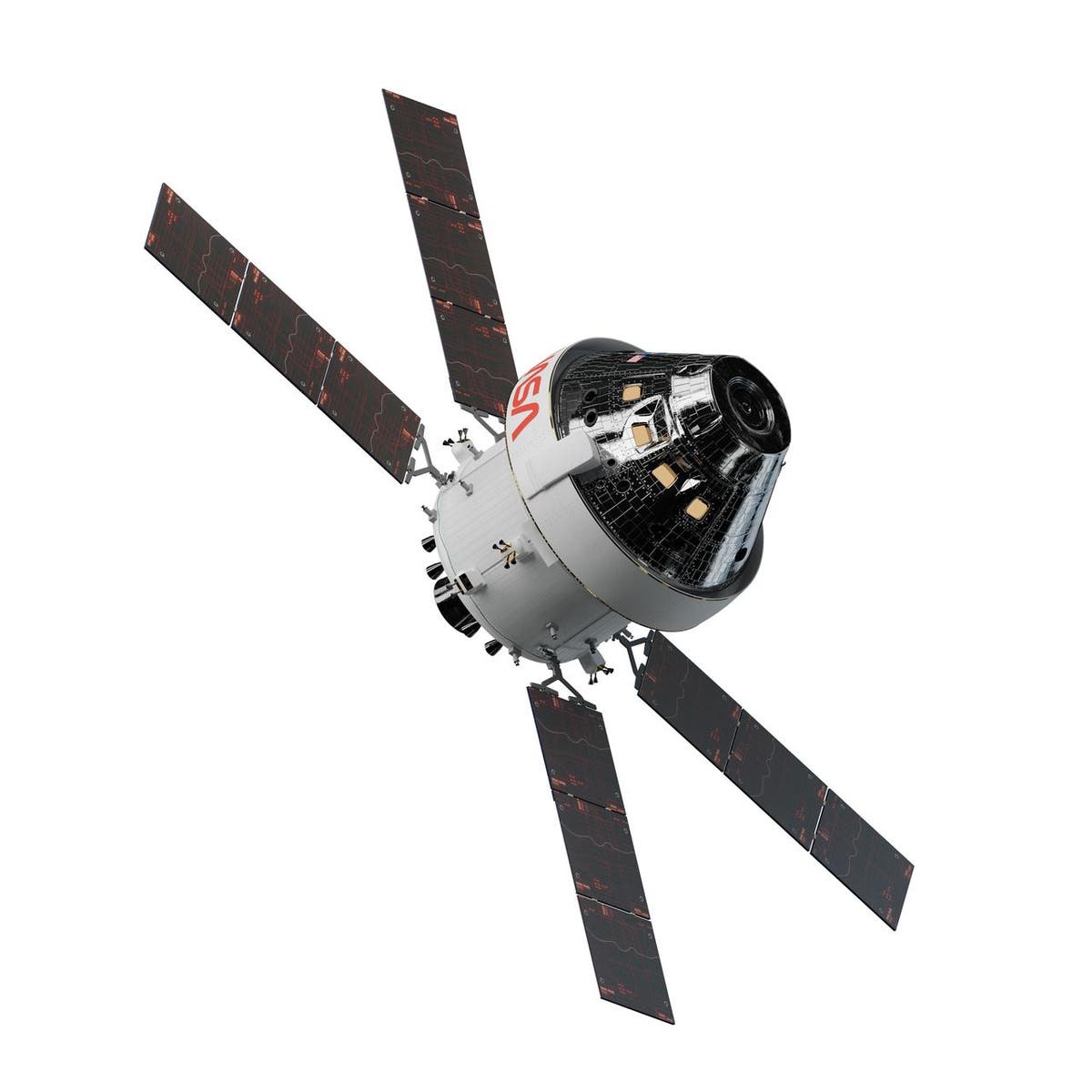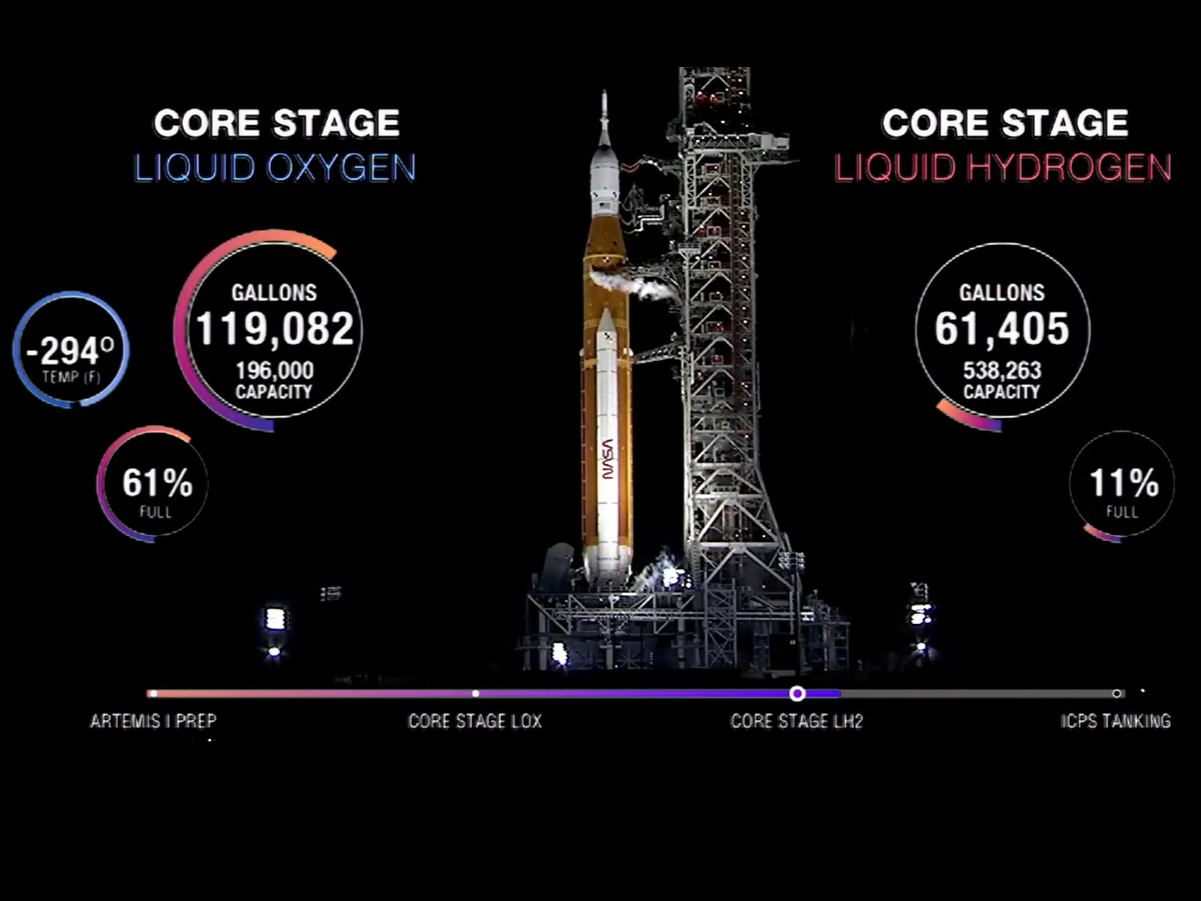Artemis launch – live: Nasa won’t commit to new launch date lift-off was scrubbed
Momentous lift off of Atemis 1 mission as Nasa live stream reveals potential issues with core stage
Your support helps us to tell the story
From reproductive rights to climate change to Big Tech, The Independent is on the ground when the story is developing. Whether it's investigating the financials of Elon Musk's pro-Trump PAC or producing our latest documentary, 'The A Word', which shines a light on the American women fighting for reproductive rights, we know how important it is to parse out the facts from the messaging.
At such a critical moment in US history, we need reporters on the ground. Your donation allows us to keep sending journalists to speak to both sides of the story.
The Independent is trusted by Americans across the entire political spectrum. And unlike many other quality news outlets, we choose not to lock Americans out of our reporting and analysis with paywalls. We believe quality journalism should be available to everyone, paid for by those who can afford it.
Your support makes all the difference.The launch Nasa’s Artemis 1 mission scheduled for Monday morning has been scrubbed due to issues with one of the Moon rocket’s engines.
Lift off from the Kennedy Space Centre in Florida was set for 08.33 local time (13.33 BST) on Monday, 29 August. The next launch window for Artemis I opens 2 September, with a second back up window opening 5 September.
As of Monday afternoon, Nasa officials said the space agency needs more time to assess the problems encountered during Monday’s launch before they can decide on a new launch date, but for now they are keeping the rocket on the pad and in a configuration that could allow a launch on Friday.
Weather conditions were favourable for launch Monday, despite some concerning lightning strikes over the weekend, and weather was not a direct cause for the scrub.
Artemis 1 is the first flight for Nasa’s fiant Space Launch System (SLS) and Orion capsule, serving as a crucial test for making sure all the related systems function properly in space ahead of the first humans climbing aboard Artemis 2 in 2023.
You can follow all the latest news and updates in our live blog below, and watch a live stream of the Artemis 1 rocket launch from Nasa TV at the top of this page.
Nasa begins fuelling Moon rocket
Nasa has begun tanking operations for the Artemis I Mission. The space agency has begun live coverage of the fueling of the Space Launch System Moon rocket on the Artemis I mission.
Teams are loading the Space Launch System (SLS) rocket with liquid oxygen and liquid hydrogen starting first with the rocket’s core stage and then the interim cryogenic propulsion stage, Nasa said in a blog post. Teams will also conduct leak checks to ensure propellant loading is proceeding as expected.
Nasa holding off full fuelling as storm approaching
Nasa has announced that it is holding off full propellant loading operations as a storm is approaching the Kennedy Space Center from the southwest.
“Launch weather officer wants to keep an eye on those. We want to monitor it for another 15 mins or so to get to less than 20 per cent chance of lightning which is a constraint to begin cryo loading,” the space agency said.
Meanwhile, teams are preparing for loading the giant rocket with pre-chilled fuel, Nasa noted.
'Tanking is good to go’
Weather constraints on Artemis I mission fuelling operations lifted, Nasa announced.
“We are below the 20 per cent threshold of lightning within 5 nautical miles of the launch pad. Great news. That means tanking operations may proceed,” the space agency said in its live broadcast.
“The pre-chilling of the launch system has begun and we are out of the weather hold,” Nasa said.
Nasa announces plans to send humans beyond Mars ahead of Moon mission launch
On Sunday, ahead of Nasa’s Artemis I Moon mission launch, the agency unveiled the organisation’s long-term ambitions to go beyond Mars and lay the foundations for a “presence throughout the solar system.”
“With Artemis I launch we are at a historic inflection point poised to begin the most significant series of science and human exploration missions in over a generation,” Nasa associate administrator for technology Bhavya Lal said.

Nasa unveils plans to send astronauts beyond Mars ahead of Artemis I mission to moon
‘Our goal isn’t to just go visit a place, it’s to bring the solar system and beyond into our economic realm’
“We are making sure that the agency’s architecture for human exploration is rooted in long-term mission - that of sustained human presence on Moon, Mars, and throughout the solar system,” she added.
Liquid oxygen fuelling has begun
Nasa has begun the slow fill of liquid oxygen of the Artemis I mission rocket.
“Core stage liquid oxygen slow fill has now begun. Liquid hydrogen to follow. This operation will take roughly 3-4 hours,” the space agency noted in a tweet.
Liquid oxygen (LOX) is the oxidiser to make the liquid hydrogen (LH2) burn. The two chemicals together make the propellant.
Liquid hydrogen fuelling started
Slow fill for liquid hydrogen into the Artemis I mission rocket has begun.
“We are currently at 8 per cent filled on the liquid oxygen front and activity has kicked off on the liquid hydrogen side,” Nasa announced in its broadcast.
“We are at the ‘fast stage’ of liquid oxygen and slow stage of liquid hydrogen fuelling – two important milestones to getting the rocket tanked,” the agency said.
How the Artemis mission Orion spaceship compares with Apollo spacecraft
Nasa expects to send astronauts to the lunar surface sometime in 2025 in its Artemis III mission aboard its Orion spacecraft.
Compared to the Apollo spacecraft that took astronauts, including Neil Armstrong, Michael Collins and Buzz Aldrin to the Moon, Nasa expects Orion to fly to the Moon and beyond.
Orion is also heavier and more spacious than Apollo enough to house four to six astronauts.
While Apollo was limited by the digital technology of the 1960s, Nasa says Orion’s computer is nearly 4,000 times more powerful than the one on Apollo.
Read more comparisons of the two spacecraft in this story by The Independent’s Jon Kelvey.

How Nasa’s new Moon spaceship Orion compares with the Apollo spacecraft
Nasa’s new spaceship headed for the Moon looks a lot like the Apollo spacecraft of the 1960s, but takes advantage of a half century of technology advances
Artemis 1 launch
Nasa’s countdown has just passed the four hour mark, though the launch team has been forced to stop the flow of liquid hydrogen after an overpressure alarm was sounded at the Space Launch System core stage.
Roughly 537,000 gallons of liquid hydrogen need to be pumped into the core stage ahead of lift off, with any delays meaning the launch of Aremis 1 could be pushed back to further in the window, or even postponed altogether.
This graphic gives the latest view of the filling of the liquid oxygen and liquid hydrogen core stages:

Artemis 1 launch
Engineers troubleshoot liquid hydrogen leak during rocket fuelling.
Nasa troubleshoots a spike in the leak of liquid hydrogen observed during the transition from slow fill to fast fill of the Artemis I space launch system.
A similar issue was identified in an earlier wet dress rehearsal, the agency said, adding that it may not necessarily be the same cause.
“The leak is at an acceptable level and we have returned to fast fill operations,” it added.
Artemis 1 launch
Teams are looking at tanking operations closely as both H2 and O2 tanks are filling fast.
Nasa updated that the Artemis 1 space launch system’s H2 tank is more than half filled and the liquid oxygen tank over three-fourths full.
“Both liquid oxygen and liquid hydrogen are currently in fast fill. Teams are monitoring closely,” the agency tweeted.
Teams are working towards a two-hour launch window opening at 8:33 AM EDT from Launch Pad 39B at Nasa’s Kennedy Space Center in Florida.

Join our commenting forum
Join thought-provoking conversations, follow other Independent readers and see their replies
Comments